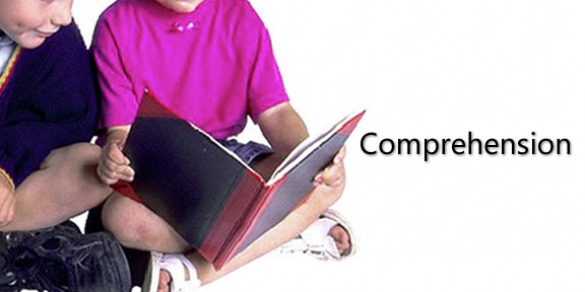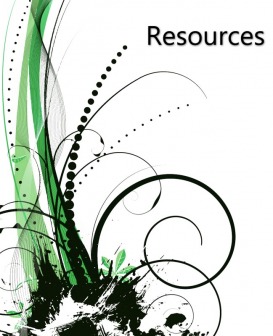making meaning out of text
Comprehension Includes:
- Knowing the student’s background knowledge
- What do you know?
- What do you want to know?
- What did you learn?
- Understanding factors that can affect reading comprehension:
- Word knowledge/Decoding skills
- Fluency
- Vocabulary
- Motivation
- Comprehension is reliant upon:
- Reader factors-what readers bring to the reading process, including purpose, motivation and strategies they use to read
- Text factors-author’s ideas, words used, organization and presentation of ideas
- Activity or the purpose and task behind the reading
Comprehension Model
- Reading Factors: A reader’s motivation and their reading strategies
- Text Factors: The ideas, words, and organization/presentation of their ideas by the author
- Activity: The purpose and text associated with the reading
Vocabulary Related to Comprehension:
- Comprehension: The reader’s process of using prior experiences and the author’s text to construct meaning that is useful to the reader for a specific purpose. The goal of reading/why we all read. Irwin, 1991
- Reading: a constructive process in which readers construct meaning by interacting with text
Pearson, Roehler, Dole, & Duffy, 1990 - Linear text: printed text
- Hypertext: electronic text
Ways to Help Students Develop Comprehension:
- Strategies are conscious efforts, flexible, should only be applied when appropriate, are widely applicable, and can be overt or covert
- Help students make connections to what they are reading
- Apply strategies to different genres
- Students don’t always need to try all strategies and they don’t need to go through the whole list
- Strategies that you learn in kindergarten can be used all the way up and some can be used independently
- Predict what will happen
- Question what happens/answer questions about what did happen
- Imagine what happens
- Clarify what happens
- Summarize what was read
- Make inferences about the text
- Use prior knowledge about the topic
- What good readers do:
- back things up
- use strategies
- build vocabulary
- use context clues [around the word/the words that you know]
- highlighting important things
- specific questions to think about before reading
- start early
- discussion
- small groups
- What good teachers do:
- teach strategies
- build vocabulary
- build background knowledge
- provide opportunities to build comprehension
- teach about the text
- engage in discussion
- encourage writing
- create authentic learning
- help students become/want to be motivated and engaged
- more coaching individuals or small groups than telling the whole class at once
- talk to students about what we do while we read
- engage students in discussion to negotiate meanings and workshop things to learn thing they could have done better
Second Language Learners (SLL):
- Meaning is not constructed from the individual words
- Comprehension goes beyond the ability to read fluently and/or recognize words
- Any number of issues can affect comprehension and these can occur for text, reader, and/or activity
Is a Student Having Trouble Comprehending?
- Is the student having issues with word decoding or recognition (sight words)?
- Is the student having issues with fluency?
- What do you know about the student’s oral language?
- Is short-term or working memory an issue?
- How is the student’s primary language related to the language of the text?
- Is the issue related to an unfamiliarity with specific features or aspects of written language?
- What strategies, if any, is the student using?
- How motivated is the student (for the material or activity?)
(Duke, Pressley, & Hilden, 2004)
Variations in issues with children who are struggling to comprehend:
- Automatic word callers: good fluency, poor comprehension
- Struggling word callers: some difficulty in word ID, though still stronger in fluency and word ID than meaning
- Word stumblers: difficulty with word ID, but relatively strong in determining meaning
- Slow and steady comprehenders: read slowly, but strong word ID and comprehension
- Slow word callers: accurate yet slow in reading, poor comprehension
- Disabled readers: difficulty in both word ID and comprehension
(Buly & Valencia, 2002)
Things to Remember:
- Have to look beyond test scores
- Triangulate your data
- Formal assessments
- Informal assessments
- Determine if multiple causes might be at work (which is true in many cases)
- Determine where the issue begins, rather than just looking at the end (comprehension)
- Determine what the best course for instruction is based on the various causes (and what you can or can’t address)
Hypertext Strategies:
- Relying on prior knowledge
- of the topic
- of the text structures
- of structures of informational websites
- of search engines on the web (to plan, predict, monitor and evaluate subsequent text)
- Setting purpose
- Reviewing and predicting
- Finding main ideas
- Minimizing disorientation
- Evaluating text
- Using literal matching skills (Did I find what I wanted to find?)
- Based on structural and context clues (Often to make inferences about the text)
Word Callers:
- Automatic: Have good fluency but don’t comprehend text as easily
- Struggling: Have somewhat of a hard time recognizing words, but are still stronger in fluency and recognizing words than they are with the meaning
- Word Stumblers: Have a hard time recognizing words, but can determine a word’s meaning fairly easily
- Slow and Steady Comprehenders: Read slowly but can recognize words and are strong comprehenders
- Slow: Accurate, yet slow readers who have a hard time with comprehension
- Disabled Readers: Have a hard time with comprehension and recognizing words
(Riddle-Buly &Valenicia, 2002)




